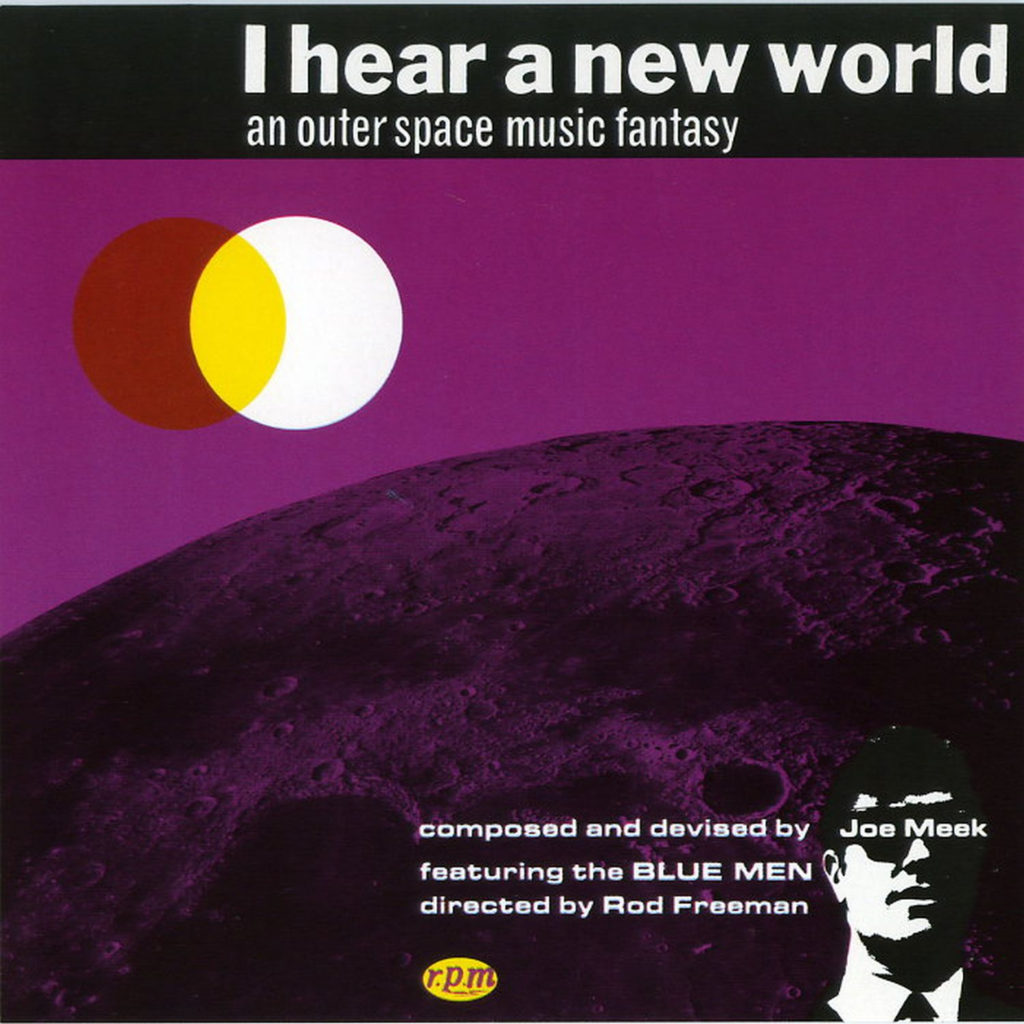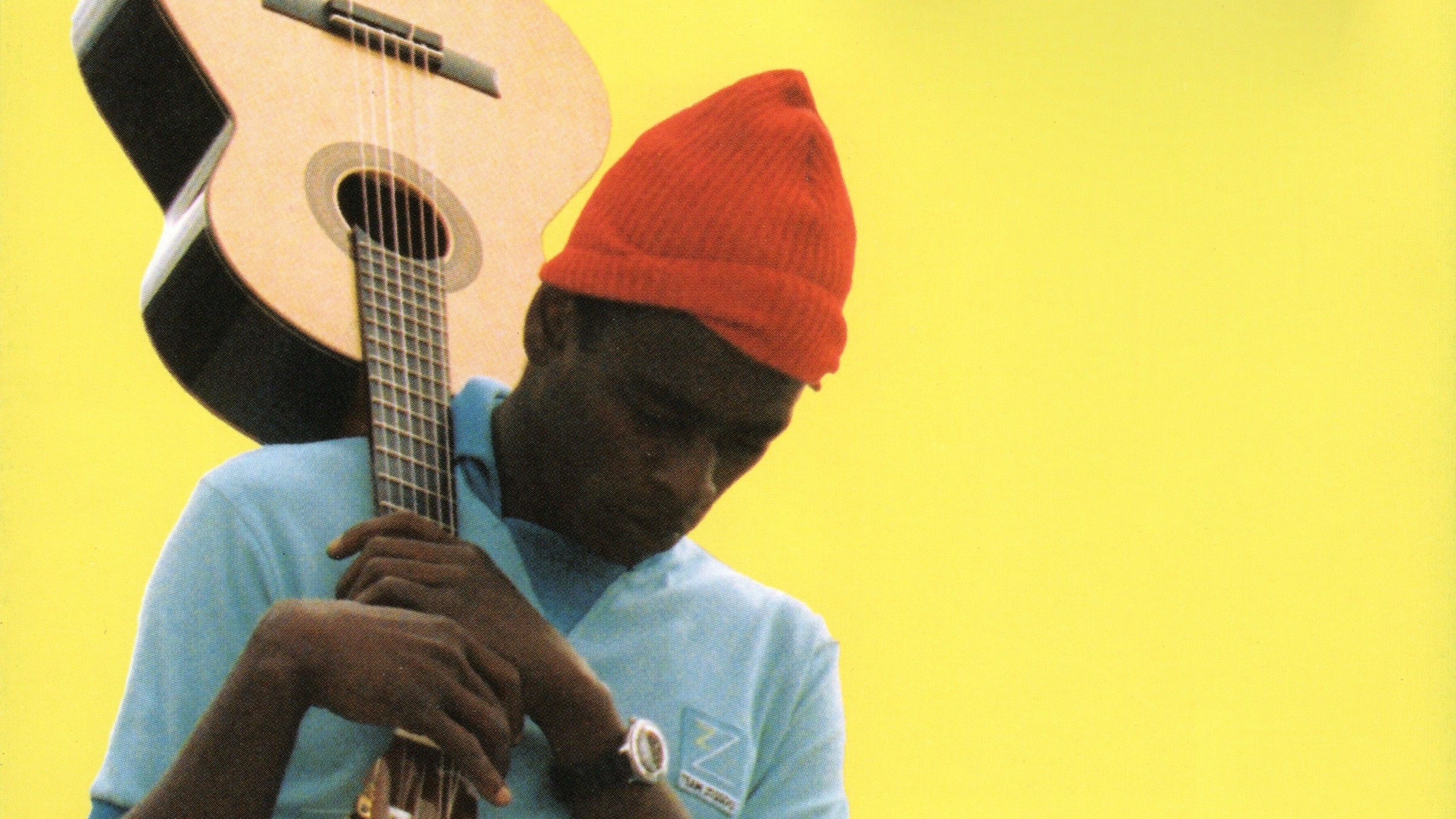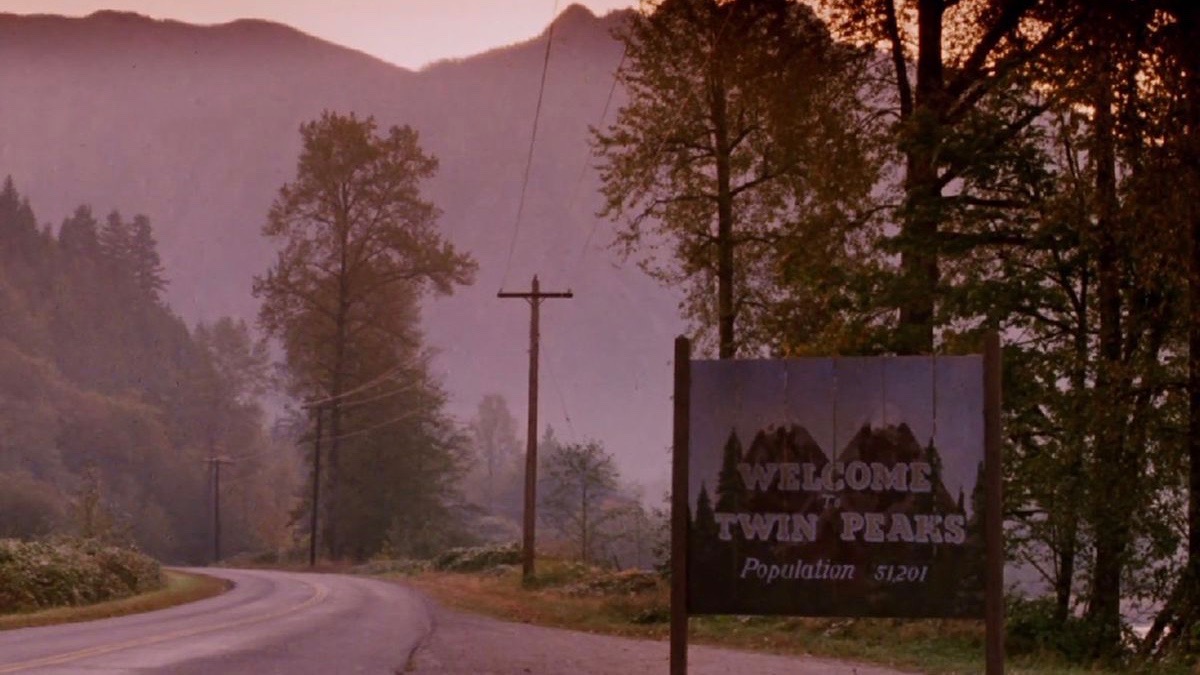
I Hear a New World: An Outer Space Music Fantasy
Triumph – 1960 / RPM – 1991
Rating: 8.6
Though it wasn’t released in its entirety until decades after his death, Joe Meek’s lone solo record is a classic example of space-age pop; experimental yet tuneful, it provides a fascinating glimpse into the brilliant-but-troubled mind of one of pop music’s true visionaries.
In the history of experimental pop music, few names inspire more gushing hyperbole than that of Joe Meek; the British sound engineer and producer who rose to prominence with a string of decidedly forward-thinking singles in the early-1960s. Perhaps more than any other figure of his time, Meek was credited with popularizing the idea that the studio itself – and the techniques employed within it – could be every bit as important of an artistic tool as composition, arrangement, and performance. Through his best-known productions – particularly John Leyton’s “Johnny Remember Me” (1961) and The Tornados’ “Telstar” (1962) – Meek proved to be a fundamental architect of the bridge that connected the rock & roll of the late-1950s to the more ambitious pop of the 1960s.
Meek’s biggest hits would be recorded in his now-legendary flat on Holloway Road in North London. Today, the notion of “home recording” is de rigueur, but in the late-1950s, the idea that any music – let alone music so heavily steeped in cutting-edge production techniques – could be recorded outside of the cold, sterile environment of the studio was unfathomable. In reality, Meek only could have created work so experimental outside of the view of the lab-coated professionals who still patrolled the halls of British recording studios of the day. Besides, where other than at home would Meek find everything – including the literal/proverbial kitchen sink – that he would need to create musical works with virtually zero precedent?
It wasn’t at the Holloway Road flat, but instead at an earlier home studio in his Notting Hill apartment, that Joe Meek would record his most ambitious project; however, speculation persists that Meek snuck in a few unauthorized after-hours sessions at Lansdowne Studio – the site of his “day job.” Conceived entirely by Meek and performed by a converted skiffle group dubbed The Blue Men, I Hear a New World was recorded in March 1960. Despite opening with its most conventional song, from the outset, I Hear a New World promises to be a thoroughly original listening experience. The lyrics from the opening title track – the only song on the record with lyrics – set out Meek’s vision for the project:
I hear a new world calling me
So strange and so real, haunting me
How can I tell them what’s in store for me?
I hear a new world calling me
Delivered by The Blue Men’s Rod Freeman – and echoed by a heavily-treated pair of pitch-shifted responses – the sparse lyrics capture both the existential dread and boundless excitement of encountering an alien landscape in a mere four lines of verse. Following the track’s slow fade, Meek and his Blue Men let the music – and a handful of wordless vocalizations – do the talking for the remainder of the album. From a shockingly rudimentary assemblage of instruments (guitar, bass, drums, tenor sax), Meek is able to create a remarkably varied and enveloping soundscape. Augmenting the traditional instrumentation, he employs a range of studio effects, odd production techniques, and “found sounds” (straws blowing bubbles in water, electrical circuits shorting, and the draining of the aforementioned sink) to achieve a song cycle befitting of its otherworldly inspiration.
Aside from its arresting opener, I Hear a New World is at its best in its most spacious moments. As if anticipating the ambient work of Brian Eno – a decade-and-a-half before the arrival of Discreet Music – tracks like “The Bublight,” “Glob Waterfall,” and “Valley of the Saroos” are worthy of their evocative titles, and the lovingly descriptive notes that Meek penned for each song. In contrast, the vocalizations employed on several of the album’s more upbeat tracks are less successful. While they give insight into what Meek may have imagined as alien pop songs, they often tend to distract from the elemental beauty of his composition and production work. For some, these tracks may be something of a deal breaker; for others, they provide a similarly ethnographic – and decidedly less complicated – depiction of an “unknown” culture to The Residents’ 1979 opus Eskimo.
To further emphasize the unprecedented nature of I Hear a New World, Meek took advantage of a still-relatively-new sonic innovation. In his liner notes for the project, he explained; “There is another reason for making this record, that is to show off stereo, and as you will hear on this record things actually move, and makes it ideal for demonstrating the abilities of stereo equipment.” Through his novel utilization of stereophonic sound, Meek set out to bridge the gap between the science of recording, and the commercial ambitions of pop music. His notes humbly continue; “At first I was going to make a record with music that was completely out of this world, but realised that it would have very little entertainment value, so I kept the construction of the music down to earth and wrote tunes that I hope you will grow to like.”
Ultimately, the commercial prospects of I Hear a New World would not even be tested. Four songs for the project were pressed as an EP, slated for a May 1960 release on Meek’s own Triumph Records. However, only ninety-nine copies were circulated, and a second volume never materialized. It wasn’t until 1991 that the full, twelve-song version of I Hear a New World – based on the running order of a 1960 acetate produced by Meek himself – would finally see release on RPM Records. While precious few listeners heard it in the interim, it’s not hard to imagine the influence of I Hear a New World having seeped into the intervening three decades of pop music. The psych, prog, and electronic genres all have at least some degree of precedent in this most charming of oddities.
It’s interesting to speculate as to why Joe Meek and Triumph Records ultimately passed on releasing I Hear a New World. By the end of 1960, Meek’s production talents were in high demand. Within the next two years, his work would find its way to the top of the charts on both sides of the Atlantic. Despite his success, the bliss that Meek had conjured in his “new world” did not transfer to reality. He began displaying worsening symptoms of depression, bipolar disorder, and schizophrenia. He became obsessed with the occult; believing that he could communicate with the dead, including his hero, Buddy Holly. He became increasingly paranoid, fearing that his homosexuality – which was still a crime in England – made him an easy target for blackmail. On February 3, 1967, Meek became entangled in an intense argument with Violet Shenton, the landlady of his Holloway Road flat. In the heat of the moment, Meek retrieved a shotgun from his studio, killed Shenton, and then turned the gun on himself.




